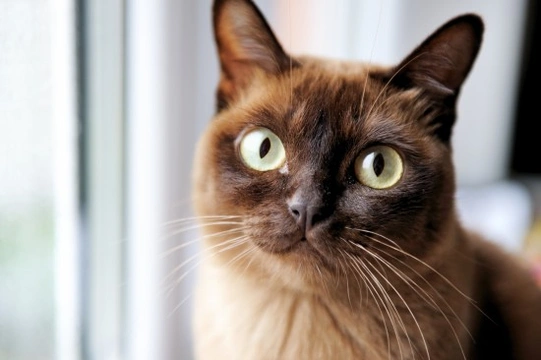
Burmese cat health and genetics
The Burmese cat is a domestic cat breed that hails from Thailand, which is renowned for its playful nature regardless of age, and its vocal meow that it is not afraid to use! The first cats of the Burmese breed were uniformly sable (dark brown) in colour, although now they can be seen in a much wider range of colours. The breed originated in its current form during the 1930’s, when a cat named Wong Mau was brought to America from Burma, and crossed with a Siamese cat. There are some differences between the American Burmese breed and the British breed lines, but generally most formal cat registries and breed standards class the Burmese from any country as one lone breed.
The Burmese cat has also been used as a founding breed within various other cat breeds that we know today, and a significant number of other breeds in their own right possess some Burmese ancestry. In this article, we will look in more detail at the genetic background of the Burmese cat and other breeds with Burmese ancestry, and cover some of the health problems that cats of Burmese breed lines can be prone to. Read on to learn more.
Genetic diversity within the Burmese gene pool
The Burmese cat breed is one breed that has a relatively low level of genetic diversity within the gene pool, and despite the significant numbers of Burmese cats owned across the world, on a genetic level, all Burmese cats are relatively closely related.
A study into Burmese genetics conducted in 2008 found that the Burmese breed had the second lowest level of genetic diversity across the breed as a whole, with only the Singapura breed having less genetic diversity within their breed pool. Over time, this has led to the usual range of problems that a lack of diversity can cause, including smaller litter sizes, less healthy cats produced per litter, smaller adult cats, and a range of immune problems being present within adult cats. All of these traits are indicative of inbreeding, which poses a serious risk to the breed as a whole.
In order to try to strengthen the Burmese gene pool and improve the genetic diversity and health of the breed, the Burmese Breed Council currently permits the outcrossing of Burmese cats with certain other breeds, in order to try to introduce a greater level of genetic diversity into the breed. Both Bombay and Tonkinese cats are permitted Burmese crossings, as are cats of the Burmese type that are imported directly from Asia, where the breed is considered to be more diverse.
Other breeds with Burmese genes
The Burmese cat has been used widely within several other breeds to produce the breed standard for separate breeds, most notably the Bombay cat, which is a black coated cat of the Burmese type.
The Burmese has also been used to establish several of the rex cat breeds, which are curly coated and form several separate breed groups in their own right. The Asian domestic cat is closely related to the Burmese too, and is very similar in appearance, aside from the fact that different coat colour and pattern combinations are permitted.
The Singapura cat possesses a homozygous Burmese gene too, and all snow Bengal cats that also have blue eyes possess the same gene with Burmese origins as well.
Burmese cat health testing
Within the UK in particular, the GCCF (Governing Council of the Cat Fancy) and Burmese breed associations recognise the challenges and potential health problems that the low level of genetic diversity within the Burmese breed can bring, and recommend health testing of breeding cats to identify potential defects.
Currently there are three DNA tests recommended for the Burmese breed, which seek to identify the presence of common abnormalities including hypokalaemia, GM2 gangliosidosis, and Burmese head defect, which is caused by a recessive gene that is prevalent within the Burmese breed. However, Burmese head defect is much more prolific in the USA than the UK, and is not hugely common over here, largely thanks to a restriction on imports of the Burmese cat from America to help to improve the UK cat gene pool.
Burmese cat health
The three conditions mentioned above are considered to pose a significant risk to the health of the Burmese gene pool worldwide, but UK Burmese cats also have a predisposition to some other health problems too.
Diabetes occurs within the Burmese gene pool more commonly than it does within most other breeds, and some breed lines within the UK also suffer from a teething disorder in kittens, which can cause extreme discomfort when the teeth come through, to the point that the cats claw at their own faces in order to try to relive the pain. There is no way to intervene or treat this problem, which resolves itself over time, but it is incredibly painful and traumatic for affected kittens, and thought to have a genetic factor to it as well.



